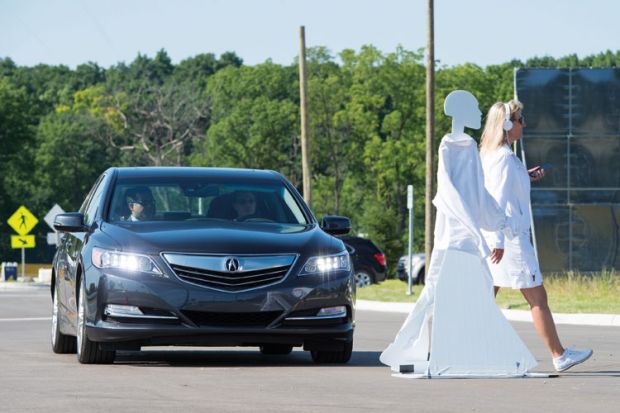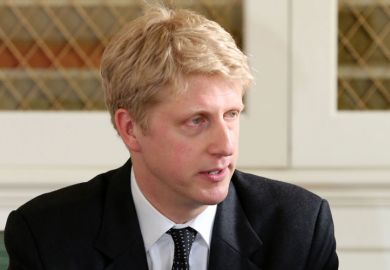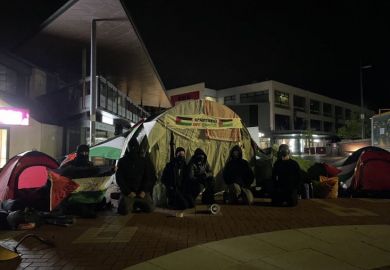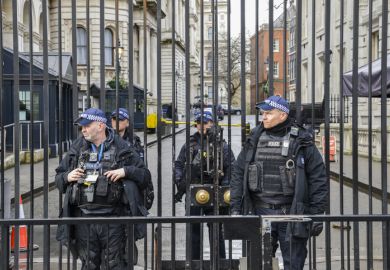The president of the University of Michigan has said that his mission is to “build a learning community that looks like the US public” as the institution places greater emphasis on increasing access and diversity.
The university recently launched two initiatives designed to attract high-achieving, low-income students. The HAIL (high-achieving involved leader) scholarship programme will provide application advice and funding for 1,000 high school pupils from the state of Michigan to apply to the university. If admitted, the programme will pay students’ full tuition and fees for four years, as well as additional financial aid according to their need.
In addition, Michigan’s Wolverine Pathways initiative will involve working in communities where low numbers of school pupils apply to the university. The free programme, funded by philanthropy, will deliver after-school and summer school schemes on the Michigan campus offering mentoring on how to apply to university. Successful students will receive a full, four-year tuition scholarship.
Mark Schlissel, who became president of the university in July 2014, told Times Higher Education that he aims to make “our student body and our faculty look like the public we are serving” in regards to their “race, ethnicity, diversity of religion, political thought and geography”.
“That’s important not just as a matter of social equity but as a matter of academic excellence,” he said.
“Students learn from each other, almost as much as they learn from their professors. And I’ve always found that you learn more when you’re engaged with people that are different from you.
“So we’re working hard to reach out to communities that traditionally have not sent as many students to the university and [we are trying] to build these groups up.”
He added that the university will compare the success of the students that go through the HAIL Scholars scheme with a control group of 1,000 similar students to see whether the initiative makes a difference to application, admittance and acceptance numbers.
“It’s not just a matter of providing generous financial assistance, it’s helping potential applicants understand that economic barriers won’t prevent them from being successful at the university, and building that kind of reputation and trust in the population, who otherwise might be scared to apply because they’re afraid they can’t afford the university,” he said.
The university is also in the midst of a $4 billion (£2.64 billion) fundraising campaign. One-quarter of the money raised will go towards student support, including scholarships and study abroad opportunities.
Dr Schlissel said the need for public institutions to focus on increasing access has become even more pertinent since states across the country diminished higher education funding.
“We get about two-thirds as much [funding] now as we did before the last recession from the state. As a result, we’ve had to increase what we charge students. We try to adjust that burden based on a family’s financial resources,” he said.
The institution also launched a new Mobility Transformation Center during the summer in collaboration with local and national government and 50 private sector companies. The center includes a 32-acre model town, named MCity, to test automated vehicles.
Dr Schlissel said that he hopes that “using technology to keep auto manufacturing on the cutting edge” will be a “good economic driver” for the city of Detroit, which was the birthplace of the global automobile industry and hosts the headquarters of several leading US car manufacturers, including Ford Motor Company and General Motors.
“It taps into our engineering, public policy, business and law disciplines, as well as other sciences, and [boosts collaboration] with local and national government and the private sector,” he said.
However, Dr Schlissel does not want the institution to exclusively focus its efforts on local students and businesses, but also continue to forge global partnerships. He said that this approach will be centred on collaborating with universities with “shared faculty research interests” and creating two-way student mobility programmes, similar to Michigan’s partnership with Shanghai Jiao Tong University that launched in 2006, “rather than building faculties in different parts of the world”.
“When you build bricks and mortar, you’re locked in. The world is changing very quickly, so you can only afford to invest so much money in that kind of capital infrastructure,” he said.
“I think the approach we’ve taken is more fluid. It lets us adjust more quickly to the interests of our faculty, to emerging institutions or opportunities around the world that we would be hard pressed to react to if we had a big bricks and mortar investment that is fixed as opposed to resources that we can move around according to opportunity.”
POSTSCRIPT:
Print headline: Michigan seeks to ‘mirror US public’
Register to continue
Why register?
- Registration is free and only takes a moment
- Once registered, you can read 3 articles a month
- Sign up for our newsletter
Subscribe
Or subscribe for unlimited access to:
- Unlimited access to news, views, insights & reviews
- Digital editions
- Digital access to THE’s university and college rankings analysis
Already registered or a current subscriber? Login







